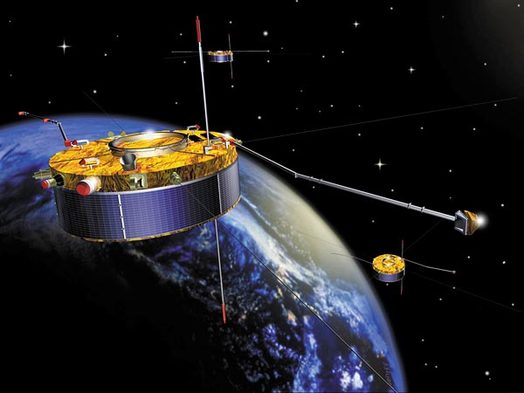Researchers already knew that some cold plasma existed in the ionosphere, about 60 miles (100 kilometers) above Earth’s surface. But few researchers had looked for the clouds between 12,400 and 60,000 miles (20,000 and 100,000 kilometers) high. André and his colleague Chris Cully suspected the plasma could be out there, but they knew the positive charge of spacecraft wasn’t helping any search efforts. Similar to the way cold plasma is created, sunlight strips electrons from spacecraft materials, making their hulls positively charged. Like two matching magnetic poles, a spacecraft would simply repulse any cold plasma around it. to find the stuff, André and Cully instead analyzed anomalies in data from the European Space Agency’s Cluster II spacecraft.
This group of four satellites swings around Earth in a highly elliptical orbit. At the orbit’s peak, the probes reach nearly halfway to the moon. The enormous distance gives researchers a chance to sweep through and monitor Earth’s magnetic field and electrical activity, including the influence of “hot” charged particles emitted by the sun. Anomalies in the Cluster II data turned out to be shockwaves from cold plasma particles moving around the satellites. In the end, the pair found that cold plasma makes up between 50 and 70 percent of all charged particles within the farther reaches of Earth’s magnetic field. André says it’s now time to start updating space-weather models to take the extra cold plasma into account—at this point, for instance, nothing is known about how the plasma might affect solar storms. This influence is “not a minor thing in space weather,” André said. “It’s an elephant in the room.” –National Geographic
http://theextinctionprotocol.wordpress.com/
See also: "Warm Plasma Cloak Discovered Enveloping Earth" National Geographic

 RSS Feed
RSS Feed